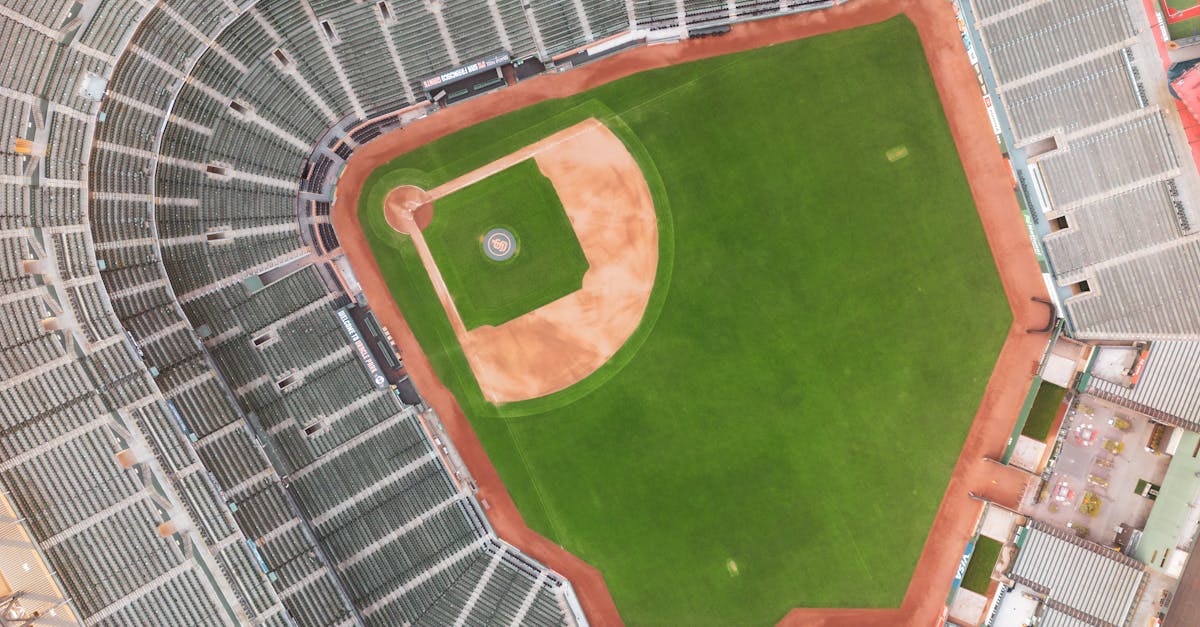Baseball
Understanding the Basics of Baseball
Diving into the basics of baseball brings back memories of my early days on the field and the countless hours spent practicing and playing this incredible game. Let’s break down some of the fundamental aspects that make baseball not just a game, but a passion for many, including me.
The Rules of the Game
Baseball, at its core, is a game between two teams, each aiming to score more runs than the other by hitting a ball and running around a sequence of bases to complete a circuit. A standard game consists of nine innings, with each team alternating between batting and fielding in each inning. The team that manages to score the most runs by the end of the ninth inning wins the game.
The pitcher, a key player on the fielding team, throws the ball towards the catcher, aiming to strike out the batter. The batter, on the other hand, tries to hit the ball into the playing field to advance runners and score runs. Strikes, balls, outs, and fouls are fundamental terms that govern the batter-pitcher confrontation, each playing a crucial role in the progression of the game.
From my experience, understanding these basic rules provides a solid foundation to appreciate the strategic depth of baseball. Whether it’s deciding when to steal a base, choosing the perfect moment for a pitchout, or determining the best batting order, the nuances of the game’s rules enhance its complexity and excitement.
Equipment and Gear Essentials
Equipping yourself with the right gear is paramount in baseball, not just for performance but also for safety. During my playing days and now as a coach, I’ve seen how the right equipment can make a significant difference.
First and foremost, every player needs a glove. Fielders use gloves of varying sizes and shapes to catch and field the ball, while catchers and first basemen have specialized mitts designed for their specific roles.
Bats come next. Made from either wood or metal (aluminum), the choice of bat depends on the league and personal preference. As a hitter, the feel of the bat in your hands, its weight, and how it swings are crucial aspects that affect your performance at the plate.
For protection, helmets are mandatory for batters and base runners in most leagues. They provide crucial safety from pitches that can exceed speeds of 90 miles per hour. As a coach, I always emphasize the importance of wearing helmets, even during practice, to instill safety habits from a young age.
Cleats are another essential piece of equipment. Molded cleats are suitable for younger players and work well on most surfaces, while metal cleats offer superior traction for advanced players on grass fields. Selecting the appropriate cleats enhances mobility and stability, reducing the risk of slips and falls.
Honing Your Skills
As a coach and a lifelong devotee of baseball, I’ve transitioned from playing at a high level in my younger years to now soaking up as many games as I can from the sidelines. My journey through baseball, from the sandlots to the more competitive turfs, taught me the intricacies of the game—the kind that you don’t just read about but live through. One critical aspect I’ve learned is that honing your skills goes beyond physical training; it’s equally about understanding and mental preparation. Let me dive into some key areas that can dramatically change the way you play the game.
Developing Pitch Recognition
When I reflect on my batting days and now watch from the dugout, I realize pitch recognition is one of those make-or-break skills in a batter’s repertoire. Developing keen pitch recognition isn’t just about seeing the ball but understanding its path the moment it leaves the pitcher’s hand.
First off, relaxed muscles are quick muscles. This principle doesn’t just apply to your limbs but to your eyes as well. Keeping your eyes relaxed and your body ready allows for quicker adjustments and better focus on the incoming pitch. One method I advocate for is minimizing head movement. The steadier your head, the clearer and more consistent your view of the ball.
Another tactic centers around the concept of a soft focus versus a hard focus. Initially, keep your gaze soft, not locked on any particular point. As the pitcher winds up, transition your focus to hard – intensely observe the pitcher’s release point. This switch helps in reacting faster to the ball. Always assume the pitch will be a strike; this mindset keeps you aggressive and prepared to swing.
Batting Practice Techniques
For batting practice, it’s not just about hitting as many pitches as you can; it’s the quality of each hit that counts. Adjustable batting tees are invaluable for this phase of training. They allow hitters to work on connecting at various pitch heights, which is crucial for developing a well-rounded swing. I often tell my players to mix up their tee work with soft toss drills to improve timing and hand-eye coordination.
Investing time in a pitching machine can also elevate your game significantly. The consistency and variety of pitches it offers mean you can work on timing, swing mechanics, and even pitch recognition—all in one session. My advice here is to start slow, focusing on making solid contact, gradually increasing the speed and complexity of pitches as you improve.
Through my years in baseball, from player to enthusiast and now coach, I’ve seen firsthand the transformation dedication to these facets of training can bring. Whether you’re a budding player or seeking to refine your skills, integrating focused pitch recognition practice and structured batting practice techniques will undoubtedly set you on the path to becoming a formidable player on the plate. Remember, every great hitter started somewhere, and it’s never too late to elevate your game.
Defensive Strategies
Since transitioning from player to coach, I’ve dedicated a huge part of my life to teaching young players about the strategic depth of baseball. It’s not just about hitting and running; there’s an art to defense that, when mastered, can make the difference in tight games. Let’s dive into some of the defensive strategies that can elevate a team’s performance on the field.
Positioning and Field Awareness
For me, understanding and teaching positioning and field awareness is all about putting players in the best possible spot to make a play. It starts with the fundamentals, like ensuring infielders know their range and outfielders understand how to read the ball off the bat. During practice, I emphasize working on quick first steps and reading the hitter’s approach. It’s critical for players to anticipate where the ball might be hit based on the count, the pitcher’s tendencies, and the batter’s history.
Positioning isn’t just about where to stand; it’s about knowing where to be as the play develops. Players need to be aware of baserunners, the number of outs, and the score to make intelligent decisions in real time. I often run drills that simulate various game situations, forcing my team to think on their feet and adjust their positioning accordingly. Teaching my players to communicate effectively on the field also plays a huge role in our defensive strategy; knowing who calls for the ball in a crowded situation can prevent collisions and missed catches.
Catching and Throwing Techniques
Good defense hinges on the ability to catch and throw accurately under pressure. I drill my players on the mechanics of both, starting with the proper way to approach and catch a fly ball or ground ball. We work on keeping the body in front of the ball, using two hands when possible, and transitioning smoothly from catching to throwing.
Throwing technique is another critical area of focus. From a proper grip on the baseball to footwork that aligns the body towards the target, each element of the throw contributes to accuracy and power. Players should practice throwing from different angles and positions to become versatile defenders capable of making plays no matter where they find themselves on the field.
I also stress the importance of decision-making in throwing. Every player must know the best option based on the game situation—whether to attempt a play at the first base, second base, or to throw to the cutoff man. These decisions can change the momentum of the game, so we spend a lot of time discussing and practicing these situations.
In all, my aim is to ensure players have a deep understanding of defensive strategies since good defense is as crucial as a strong offense. Watching my players incorporate these lessons during games, making smart plays and contributing to our team’s success, is immensely rewarding. This focus on defense truly is the bedrock of my coaching philosophy, emphasizing preparation, skill development, and mental acuity on the field.
Advanced Baseball Techniques
Optimizing Pitch Recognition
As a baseball coach, one technique I always emphasize to my players is the art of optimizing pitch recognition. It’s not just about seeing the ball but understanding its path the moment it leaves the pitcher’s hand. This skill is crucial because it determines not just if you’ll hit the ball, but how well you’ll hit it.
First, I teach my players to focus on the pitcher’s release point. A consistent, focused gaze on this spot improves the ability to quickly identify the type of pitch thrown. This practice, coupled with knowledge of common pitching patterns and an understanding of a pitcher’s tendencies, drastically enhances a batter’s chances at the plate.
Another key aspect is training batters to adopt a “yes, yes, yes, no” mentality, staying mentally prepared to swing at every pitch until it’s identified as a ball. This proactive approach ensures that they’re always ready to capitalize on a good pitch, reducing hesitation and missed opportunities.
Finally, we work relentlessly on hand-eye coordination drills. Through batting practice, video analysis, and simulation exercises, I help players fine-tune their reactions, enabling them to make split-second decisions that often make the difference between a strike and a home run.
The Mental Game of Baseball
The mental game of baseball, in my perspective, is just as important as the physical one. Baseball is a game of errors and failures; even the best hitters succeed only 30% of the time. Teaching my players to maintain a strong mental game is paramount to their success and resilience on and off the field.
One of the first mental toughness principles I instill is the importance of a short memory. Whether it’s shaking off a bad at-bat or moving past a fielding error, the ability to forget and refocus is critical. I frequently organize mental toughness workshops that include visualization techniques, where players mentally rehearse their success before stepping onto the field.
I also emphasize the significance of routine. Consistent pre-game and between-inning routines help players create a sense of normality and control, which can significantly ease game-day anxiety. Whether it’s specific stretching, mental preparation, or a series of swings, routines help anchor my players, giving them a sense of readiness and confidence.
Lastly, fostering a team culture where players support and motivate each other is vital. Baseball is a team sport, and while individual performance is crucial, the mental and emotional support teammates offer each other cannot be understated. I encourage my team to communicate openly, celebrate each other’s successes, and lift each other during tough times.
In my coaching journey, focusing on these advanced baseball techniques has not only improved my team’s performance but has also enriched my understanding and love for this beautiful game. As I watch baseball as much as possible, I continuously learn and integrate new strategies into our training, always striving for that perfect blend of skill, strategy, and mental toughness.
Training and Conditioning
Physical Fitness for Baseball Players
In my years of playing and coaching baseball, I’ve learned that physical fitness is not just about being able to hit the ball further or throw it faster; it’s about durability, agility, and the strength to perform at your peak through the late innings. When I played at a high level, I discovered early on that a well-rounded fitness regime was my best ally.
First, cardiovascular health is crucial. Running is a staple in my training programs, incorporating sprints for speed and longer runs for endurance. Baseball is a series of quick bursts of energy followed by periods of rest, so interval training mirrors the game’s pace perfectly.
Strength training, meanwhile, focuses on functional movements. Exercises like squats, deadlifts, and lunges build the lower body strength necessary for explosive starts and quick direction changes. Upper body strength, achieved through push-ups, pull-ups, and dumbbell work, ensures powerful swings and throws.
Flexibility and mobility can’t be overlooked either. Incorporating yoga and dynamic stretches into our routine enhances range of motion and prevents injuries. Baseball demands so much from our bodies, and keeping muscles limber and joints healthy is paramount.
In-Season and Off-Season Training Plans
Crafting the right in-season and off-season training plans has been a game-changer in my coaching strategy. During the season, the focus shifts to maintenance and recovery. The schedule’s packed, and games can take a toll on the body. We trim down strength sessions to avoid fatigue and up the ante on mobility work and active recovery. Practices still include sprints and agility drills but at a moderated pace to keep players sharp without overworking them.
The off-season, conversely, is where the real gains happen. This is the time for building muscle, enhancing endurance, and focusing on individual weaknesses. We increase the intensity of workouts gradually and incorporate a variety of training methods such as plyometrics for explosiveness and swimming for low-impact cardiovascular fitness.
Nutrition also becomes a significant focus off-season. I encourage my players to fuel their bodies with the right balance of proteins, carbs, and fats to support muscle growth and recovery. Hydration, too, is crucial, as it affects performance directly.
I’ve learned, both as a player and now as a coach, that tailoring these plans to each athlete’s specific needs leads to remarkable progress. Watching them turn their hard work in training into exceptional performance on the field is incredibly rewarding. My aim is not just to produce good players but resilient athletes who understand the value of conditioning in baseball.
The Cultural Impact of Baseball
Baseball in American Society
In my journey from player to coach, I’ve seen firsthand how baseball has woven itself into the fabric of American society. Growing up, idols like Babe Ruth and Jackie Robinson weren’t just athletes; they were symbols of hope, resilience, and the American spirit. My love for the game was ignited by legends who stepped onto the diamond, transforming baseball into more than just a sport—it’s a narrative of the nation’s trials and triumphs.
Baseball mirrors societal changes, adapting yet somehow remaining a constant, reassuring presence through the ups and downs. It’s fascinating how the game has maintained its core, staying true to its roots while embracing evolution. From the introduction of night games to breaking racial barriers, baseball reflects America’s growth and its struggle with complex issues. These moments aren’t just sports history; they’re American history.
How Baseball Connects Communities
I’ve always believed that baseball has a unique power to bring people together. As a coach, I see it every season—the local field becomes a gathering place, a community hub where friendships form and families bond over shared experiences. In my playing days, my teammates and I found a brotherhood on the field, a connection that transcended the game. Now, watching from the sidelines, I see the same bonds forming among the new generation.
Baseball’s role in local communities extends beyond the diamond. Charity events, little league tournaments, and high school championships become focal points, drawing crowds and fostering a sense of unity. It’s incredible how a game can ignite local pride and play a crucial role in community identity. In towns big and small, the local baseball field often stands as a testament to community spirit, a place where memories are made, and dreams are nurtured.
Reflecting on baseball’s cultural impact, I’m reminded of why I fell in love with the sport. It’s not just the thrill of competition or the strategy of the game. It’s the way baseball has the power to connect us, to bring out the best in our communities, and to remind us of our shared heritage and hopes. As I watch games, coach players, and engage with fans, I’m proud to be part of this enduring tradition. Baseball, in its essence, captures the heart of what it means to be part of a community, part of a larger story.
Key Takeaways
- Understanding and Respecting the History of Baseball enhances appreciation for the game, recognizing its evolution and the impact of legends who transcended sports to become cultural icons.
- Developing Fundamental Skills and Knowledge is critical, from mastering basic rules and equipment essentials to honing advanced techniques in pitching, batting, and defense, ensuring a well-rounded approach to playing the game.
- Emphasizing Physical Fitness and Proper Training during both the off-season and in-season periods is essential for peak performance and injury prevention, highlighting the importance of cardiovascular health, strength training, and flexibility.
- The Mental Aspect of Baseball plays a significant role in a player’s success, focusing on mental toughness, the importance of a short memory for overcoming mistakes, and the value of routine and team cohesion for in-game confidence.
- Community and Cultural Impact of Baseball underscores the sport’s ability to connect people, foster community spirit, and serve as a reflection of societal changes and challenges, making it more than just a game but a shared experience that bonds individuals across generations.
Conclusion
Diving into the world of baseball has been an incredible journey for me. From the basics to the advanced strategies and the deep cultural significance, it’s clear that baseball is more than just a sport. It’s a powerful connector of people, embodying hope and resilience. My exploration, inspired by Buckley’s guide and my own experiences, aimed to share not just the technicalities but the heart of baseball. I hope this guide has sparked your interest or deepened your love for the game, showing you how intertwined it is with our lives and communities. Let’s keep the spirit of baseball alive, cherishing its lessons and the joy it brings to us all.
Frequently Asked Questions
How many endings are in baseball?
Professional and college baseball games are typically played across nine innings. For softball, high school baseball, and some minor league baseball doubleheaders, games are usually seven innings.
What do they use to play baseball?
To play baseball, the essential equipment includes a glove, a ball, and a bat. However, organized team play also requires additional gear such as a helmet, a protective cup, and cleats.
Where is the birthplace of baseball?
Baseball’s origins trace back to the mid-1800s with Abner Doubleday in Cooperstown, New York. The first official baseball game was played in 1846 in Hoboken, New Jersey. The Cincinnati Red Stockings were the first professional team, established in Cincinnati.
What is the 10 rule in baseball?
The 10 run rule in baseball stipulates that if a team leads by 10 or more runs at the end of a regulation game, the game concludes prematurely. Specifically, if the visiting team leads by 15 or more runs, the home team must complete its at-bat in the inning.
How many players are needed to play baseball?
A standard baseball game is played between two teams, each consisting of nine players. The game unfolds over nine innings, with each inning divided into a top (visitor team at-bat) and a bottom (home team at-bat) half.





























































